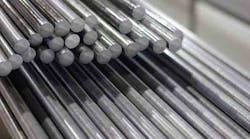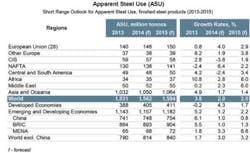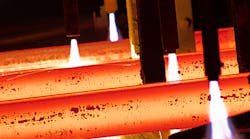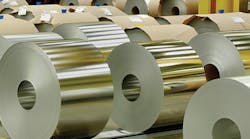The World Steel Association is forecasting another decline in the rate of increase for global steel consumption. The trade group, which represents carbon steelmakers in 65 countries, sees 2014 global steel consumption rising 2.0% over the 2013 “apparent steel usage”, which increased 3.8%.
In its previous Short Range Outlook, issued in April, World Steel forecast 2014 global steel consumption would rise 3.15% for 2014.
Looking out to 2015, World Steel sees consumption remaining steady with a 2.0% increase. The previous Outlook report forecast a 3.3% increase in consumption for 2015.
“The positive momentum in global steel demand seen in the second half of 2013 abated in 2014 with weaker than expected performance in the emerging and developing economies,” observed Hans Jürgen Kerkhoff, chairman of World Steel Economics Committee. “As a consequence we are issuing a lower steel demand growth figure than our forecast released in April this year.”
The slower demand is the result of various factors in different geographic regions. In China, the world’s dominant steel producing nation, slowing steel demand reflects “the structural transformation of the economy,” according to Kerkhoff, and that has contributed “significantly” to the Committee’s lower global growth projection.”
China’s domestic steel industry has expanded exponentially in the past two decades, and the industry now produces about half of all the world’s raw steel on a regular basis. However, China’s central planners have worked to slow the rate of capacity expansion, fostering a multi-year program of consolidation intended to curb overcapacity and enforce some price stabilization.
“We have also seen major slowdown in South America and the C.I.S. countries due to falling commodity prices, structural constraints, and geopolitical tensions,” Kerkhoff stated.
In contrast to those regions, he noted that the world’s more developed economies have fared well this year. “Recoveries in the E.U., United States, and Japan are expected to be stronger than previously thought, but not strong enough to offset the slowdown in the emerging economies.”
Kerkhoff said 2015 would see steel demand growth slowing in developed economies, with increases in demand then resuming in emerging and developing economies.
However, in China during 2015 ‘rebalancing” will continue to act as a drag on steel demand, according to the forecast.
This outlook is prone to risks coming from various fronts. The US interest rates increase expected in 2015 is likely to impact global capital flows creating instability in the vulnerable emerging markets. At the same time the outlook in emerging markets is constrained both by the need for structural reforms and geo-political tensions and as a result energy prices, globally, have emerged as a new risk factor. In China, the rebalancing and transition towards a consumption driven economy is not without challenges and uncertainties. Lastly, the recovery in the Euro-Area is still constrained by household and government deleveraging.”










